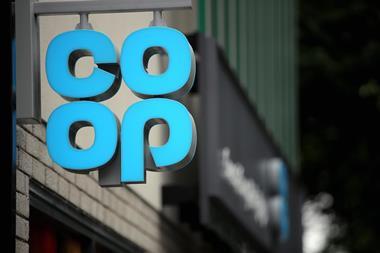It’s just over a year since its $19bn acquisition of Cadbury. Kraft’s results have given Adam Leyland a proper opportunity to examine progress
Kraft’s results fell awkwardly last week for The Grocer, just after the magazine had gone to press on Thursday night.
But the small matter of its $19bn (£12bn) takeover of Cadbury last January demands further examination.
So how’s it all going? With “multiple headwinds” including “continued escalation in input costs”, a “weak consumer environment” in key markets, and sales of chewing gum a particular concern, CEO Irene Rosenfeld admitted that sales/revenue was “somewhat below expectations”. And group profits in the final quarter were down 24% as a result of integration costs from the Cadbury acquisition.
Perhaps inevitably, media coverage has focused on the negatives. “Profit squeezed”, “Profit meltdown” and “Kraft indigestion” were three of the choice headlines.
But a better clue to the City view is the share price, and not only is it up 10% since the acquisition was rubberstamped last January from about $28 to $31 it barely flickered on news of the results last week. So clearly the costs associated with the deal have been factored in by Wall Street.
US
Cadbury -6.1%
Kraft +4.1%
Europe
Cadbury -0.1%
Kraft +2.2%
Developing markets
Cadbury +6.7%
Kraft +17.3%
Total
Cadbury +2.2%
Kraft +6.5%
On the positive side, Rosenfeld also notes the integration is ahead of schedule and costs are 10% below original estimates. As a result, says Rosenfeld, “we now expect the Cadbury acquisition will turn earnings accretive in 2011”.
And she adds, for emphasis: “That is, accretive to operating earnings per share and not just to cash EPS as we had previously guided.”
So far, so good. But a former senior Cadbury executive plays down the importance of synergy savings. “They had to get those numbers signed off without access to the books, so they were always going to be conservative. EPS dilution in year two is hardly the most challenging metric. A more demanding one is return on capital employed. They took on pension fund deficits. They have got to get a return.”
Of equal concern will be sales, says the former executive, and all the more so because Kraft is promising not only $750m in cost synergies but an extra $1bn in revenue as a result of the takeover.
“The key metric I look for is topline growth on a like-for-like basis. Cadbury grew at 7% in the previous year. So for it fall to 2% shows momentum has been lost.”
This was to be expected, the executive acknowledges. “As the two businesses go about integrating, people take their eye off the ball. The sales force will be worrying, ‘when the teams merge, will I have a job?’” He also speculates that a reduction in promotional spend in some countries was “not for deliberate reasons, but because it takes a while to sell promotion in, and again, if you’re not on top of your game, it’s harder to convince retailers in the same way”.
The best performance came in developing markets. And it could have been better, says the executive, as Kraft “normalised” inventory levels for Cadbury in line with its policy. “In areas that are low margin and with a short shelf life, such as biscuits and cheese, that makes sense, but in a market such as chewing gum, which is high margin and long life, it runs the risk of losing out on sales if it operates to such low tolerance levels, and will probably adjust its policies on stock levels in due course.”
With 5% growth, the UK was a rare bright spot in the depressed European market. And the former Cadbury executive gives Kraft Europe markets president Trevor Bond and UK and Ireland MD Nick Bunker credit for “keeping it going quite nicely in the UK”. “What I saw was a pretty good performance in the UK, which is good news given all the press about the number of people leaving. They have a reasonable handle on affairs.”
Rosenfeld described UK performance as solid, and sales of power brand Cadbury Dairy Milk rose almost 10%, while Crunchie and The Natural Confectionery Co. delivered 20% sales gains, though off a lower base.
But the gains, particularly on chocolate in the UK, were offset by weakness in chewing gum and sugar confectionery in southern Europe, Rosenfeld conceded.
Even more worrying, says the former Cadbury executive, is the US performance of Cadbury. Rosenfeld blamed harsh like-for-like comparisons with the previous year, when sales of Halls cough sweets were boosted by fears over avian flu; but with Trident and Stride sales plummeting, “the area of chewing gum is a concern”.
“Gum started to be disappointing in 2008, so the issues precede Kraft,” says the former Cadbury exec. “The whole market worked very hard on this and we concluded that a lot of heavy chewing gum users stopped buying gum following the ban on smoking in public places. But Kraft hasn’t done anything to change that trend, and the US performance was very bad. They have lost share to Wrigley.”
Rosenfeld denies this. “We increased advertising and marketing support in key markets, which drove market share growth in all categories, including [chewing] gum and candy,” she told investors.
The other fly in the ointment is likely to be input costs. “The first quarter of 2011 looks really difficult,” says the former Cadbury executive. “In 2010, manufacturers by and large got the price increases through probably better than they expected. This year, however, consumers are really feeling the pinch in terms of cash and I think it will be a real challenge to persuade retailers to pass on price increases.”
Rosenfeld acknowledges significant input cost inflation in the final quarter it amounted to £489m in extra costs and admits “pricing and productivity lagged the spike in input costs”. It is currently implementing another round of price increases, she added, although productivity and overhead efficiencies and an improved product mix would also improve margins. “Given our strong business fundamentals, we remain confident that we will deliver earnings growth in 2011 that’s both ahead of our long-term targets and within the top tier of our peer group .”
And with “an infusion of top talent” from the acquisition, strong cash flow reducing net debt by more than $4bn in the past year, integration to be 80% complete by the end of this year, and the two companies trading on a common operating platform, Rosenfeld added she was “cautiously optimistic”.
The former Cadbury executive concurs with this assessment. “It’s far too early to say if this acquisition is going to be a success. I’m sure people at Kraft will have a good sense, but it will take another year to really know.”
So will it be the $1bn extra sales on which Rosenfeld is judged? Or the $750m of savings? It will be neither, adds the former Cadbury executive. “Success will be measured by the share price. Ten years ago, the price was $31. Last year it was $28. Today it is $30.70. What Kraft shareholders really want to see is a substantial increase in the share price. It wouldn’t be before time.”
UK progress
- “Solid year” with strong sales in chocolate offset by sluggish sugar confectionery performance
- 7,000 employees in combined UK and Ireland operations
- Kraft closed Cheltenham office. New Kraft HQ in Uxbridge is still called Cadbury House
- 120 senior Cadbury management have left but 40 remain, and 98% of the UK-focused marketing team is based in UK
- Ex-Cadbury MD Trevor Bond has moved to pan-European offices as president (markets) while Nick Bunker runs UK operations
- Kraft confectionery R&D centre moved from Munich to Bournville with the creation of 50 jobs
- Sales director Dave Pogson runs Kraft and Cadbury sales forces
- Somerdale plant shuttered in January 2011



















No comments yet